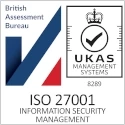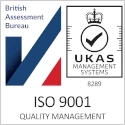15
+
YEARS OF
EXPERIENCE
1000
+
SUCCESSFUL
Projects
80
+
Satisfied
Clients

As organizations increasingly migrate their critical workloads to the cloud, the need for advanced security solutions that can effectively monitor and protect cloud environments has never been more pressing. Traditional security tools designed for on-premises networks are often ill-equipped to handle the dynamic and complex nature of cloud infrastructures. This is where Cloud Detection and Response (CDR) comes into play.
What is Cloud Detection and Response?
Cloud Detection and Response is a security solution specifically designed to detect and respond to threats within cloud environments. Unlike traditional security measures that focus on perimeter defense or endpoint protection, CDR is built to address the unique challenges posed by the cloud. Cloud environments are dynamic, often involving multiple services and resources spread across various public or hybrid cloud infrastructures. These complexities create more opportunities for attackers to exploit vulnerabilities, making comprehensive cloud security essential.
CDR solutions continuously monitor cloud workloads, configurations, and user behaviors to detect suspicious activities or deviations from normal patterns. These solutions provide visibility into cloud resources and help identify threats such as misconfigurations, unauthorized access, data breaches, and more. By collecting and analyzing cloud security data, CDR platforms can provide real-time alerts, automate threat responses, and assist security teams in investigating and mitigating attacks.





Key Features of Cloud Detection and Response
The core strength of Cloud Detection and Response lies in its ability to integrate deeply with cloud-native services and provide a comprehensive security view across cloud environments. One of the essential features of CDR solutions is real-time threat detection. This includes monitoring cloud activity for abnormal behavior, suspicious access patterns, or potential security breaches. For example, if an attacker gains unauthorized access to a cloud environment, the CDR system can detect unusual user activity, such as accessing files or systems they typically wouldn’t interact with.
Another important feature of CDR is behavioral analysis. This goes beyond traditional signature-based detection to identify anomalies in user or system behavior. By establishing baseline patterns of normal activity, CDR platforms can flag any significant deviation, such as a user logging in from an unfamiliar location or a sudden spike in data transfers. This approach helps identify advanced threats, such as insider attacks or credential-based attacks, which may bypass conventional security measures.
Cloud visibility is another critical feature of CDR solutions. Cloud infrastructures can be highly fragmented, with multiple services, platforms, and applications working in tandem. CDR solutions provide a unified view of all cloud resources, including workloads, databases, and virtual machines. This comprehensive visibility allows organizations to track cloud activity across their entire infrastructure, helping security teams pinpoint vulnerabilities or misconfigurations that could be exploited by attackers.
Additionally, automated response and remediation capabilities are an integral part of many CDR solutions. When a threat is detected, the system can take immediate action to isolate the compromised resource, block malicious access, or revoke privileges, reducing the time between detection and mitigation. This automated response helps to minimize the impact of attacks and ensures a more efficient incident response process.
Security Solutions
Comprehensive security solutions to protect your data, networks, and systems from evolving cyber threats and vulnerabilities.MS Defender Platform
Utilize Microsoft Defender Platform for integrated, advanced threat protection across endpoints, identities, and cloud environments.AI Security
Leverage AI-driven security solutions to detect, respond, and prevent threats in real time, ensuring robust protection.
Benefits of Cloud Detection and Response
The growing adoption of cloud services introduces new risks that require specialized security measures. Cloud Detection and Response offers several key benefits that make it an invaluable tool for modern cloud security:
1. Enhanced Threat Detection in Dynamic Environments
One of the most significant challenges in securing the cloud is the ever-changing nature of cloud environments. New services, users, and applications are frequently deployed, which can lead to blind spots in traditional security monitoring. CDR platforms, however, are designed to operate in these dynamic environments, continuously monitoring for threats as they emerge. By leveraging real-time data and advanced analytics, CDR solutions can detect and respond to potential risks faster than conventional security tools.
2. Proactive Security for Cloud Workloads
Cloud Detection and Response helps organizations adopt a proactive security posture by focusing on threat prevention rather than simply detecting and reacting to incidents. By continuously monitoring cloud resources, CDR systems identify risks before they escalate into major security events. For instance, a misconfigured cloud storage bucket or improperly set access controls can be flagged by the CDR platform, allowing the security team to resolve the issue before it is exploited by attackers.
3. Better Visibility into Cloud Activities
Cloud environments are often complex, with resources distributed across multiple regions and cloud providers. This can create significant visibility gaps for security teams. CDR solutions address this challenge by offering comprehensive cloud visibility. These platforms track every activity in the cloud—from API calls to data movements and user behavior—ensuring that security teams have a clear view of their cloud infrastructure’s security posture. This level of visibility makes it easier to identify vulnerabilities, track compliance, and spot potential risks before they become security incidents.
4. Rapid Incident Response and Automation
Speed is crucial in mitigating the impact of cyberattacks. Cloud Detection and Response platforms help organizations respond faster to threats by automating key aspects of incident response. When a threat is detected, CDR solutions can automatically isolate affected systems, block malicious users, or initiate remediation workflows. This automation reduces the response time and helps security teams act swiftly to contain and resolve incidents.
Additionally, automated playbooks can be used to standardize response protocols, ensuring that every security incident is handled consistently and efficiently. This reduces the potential for human error and ensures that no critical steps are overlooked during incident resolution.
5. Reduced Complexity and Operational Overhead
Securing a cloud environment requires constant vigilance across a diverse set of resources. Managing cloud security through multiple point solutions can be complex and resource-intensive. Cloud Detection and Response platforms streamline security operations by consolidating threat detection, visibility, and incident response into a single solution. This reduces the burden on security teams and minimizes the complexity of managing multiple tools. By centralizing cloud security management, CDR platforms make it easier to stay ahead of emerging threats while improving operational efficiency.
6. Compliance and Risk Management
As cloud environments become more integral to business operations, maintaining compliance with industry standards and regulations becomes increasingly challenging. Cloud Detection and Response solutions help organizations meet compliance requirements by continuously monitoring their cloud resources for misconfigurations, unauthorized access, and other security risks. Detailed logs and reports generated by CDR platforms also assist with audits, making it easier to demonstrate compliance with regulations like GDPR, HIPAA, and PCI DSS.
Conclusion
Cloud Detection and Response is a crucial component of any organization’s cloud security strategy. As businesses continue to embrace cloud computing, the risks associated with insecure cloud environments are becoming more pronounced. Traditional security tools often fall short when it comes to detecting and responding to threats within the cloud. CDR platforms, however, offer a tailored approach to cloud security, providing advanced detection, real-time monitoring, and automated responses to mitigate cloud-specific risks.
By improving threat detection capabilities, enhancing cloud visibility, and automating incident response, Cloud Detection and Response solutions allow organizations to secure their cloud infrastructures more effectively. As cloud environments continue to evolve, implementing a robust CDR solution is essential for staying ahead of emerging threats and ensuring the integrity and security of cloud workloads. In a world where cyber threats are ever-present, Cloud Detection and Response provides the tools needed to safeguard critical digital assets and maintain the trust of customers and stakeholders alike.

answer time
satisfaction
score
on initial call
same business
day









